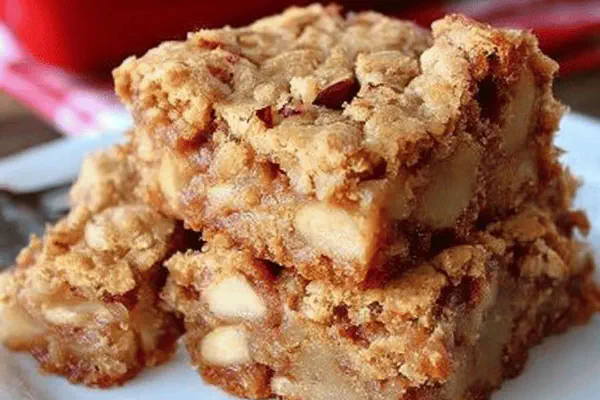Featured Recipe
Citrus Spark Pound Cake

By Kate
"
Dense, tender cake with a citrus fizz twist. Uses baking soda for lift, combined with a lemon-lime soda substitute. Replace half butter with oil for moist texture and add vanilla bean paste for aromatic depth. Careful folding ensures crumb stays light. Glaze made from powdered sugar, citrus juice, and soda melds tartness with sweetness. Inverted while warm to prevent sticking. Chopped cherries add bursts of flavor and color on the fresh, tacky glaze. Watch for color shifts, toothpick crispness to check doneness. Adjust timing based on pan and oven quirks. Classic bundt shape but holds moisture well. A reliable crowd-pleaser with a soda pop surprise.
"
Prep:
20 min
Cook:
Total:
Serves:
12 servings
baking
desserts
poundcake
citrus
soda
Introduction
Butter creamed long enough to catch every fleeting bubble—lightness depends on it. Sugar folded in gradually, not dumped all at once, or you lose volume. Eggs added one by one so they don’t hack the air pockets. Flour sifted religiously. This isn’t just baking, it’s physics. The fizz—in this case soda mixed with fresh lemon and lime juice—reacts with baking soda for controlled lift and subtle citrus tang. Timing’s a trick but the visual cues don’t lie—you want golden crust with cracks that mean rise not blowout. Bundt pan shape helps hold moist crumb while edges brown just enough. Toss in a few chopped cherries on tacky glaze for bursts of sticky, sweet surprise. A citrus-soda cake that’s steady, relies on tried tricks and senses, not just clocks.
Ingredients
About the ingredients
Butter’s softness here is crucial—too hard and it won’t cream right, producing denser cake. If you lack vegetable oil, substitute melted coconut oil for a slightly exotic note. Soda pop’s replaced with a fizzy water mix plus extract to control sugar content. Use sifted flour to avoid pockets that tear the crumb. Sea salt balances sweetness without overwhelming like table salt can. If cherries aren’t your thing, tiny candied ginger pieces or dried cranberries work well for a tart counterpoint. Powdered sugar for glaze must be sifted to avoid grit; add liquid slowly, watching thickness. Maraschino cherry juice bleeds but that’s part of charm, not a flaw. Keep an eye on batter texture—not too runny, not too stiff—for a tender, even crumb.
Method
Technique Tips
Preheat thoroughly, oven temps fluctuate—use an oven thermometer if unsure. Greasing and flouring bundt pans is tricky; don’t skip flour—it catches oil excess and ensures ease of release. Creaming butter and oil together gets tender crumb; mixing too fast or too slow ruins air bubbles needed for rise. Alternate additions keep gluten from toughening crumb. Tap pan on counter to pop bubbles—keeps texture even. Crack patterns on top signal correct expansion; deep fissures mean oven too hot. Toothpick test relies on knowing what moist crumbs mean—wet batter needs more baking, dry crumby means overbaked. Invert warm but not hot to retain shape. Glaze consistency is key—too thin and it runs off, too thick and it looks chalky. Adding cherries while glaze tacky locks them in place for bites of sweet tartness. Wrap leftovers to keep moist, cake can dry fast otherwise.
Chef's Notes
- 💡 Cream butter until pale and fluffy; trapping air crucial. Don’t rush this step. Gradual sugar addition matters too. Each layer needs blending. Avoid grainy texture. Eggs go in one by one. Overmixing? Dense crumb results.
- 💡 Flour, salt, and baking soda—sift thrice. Finer the sift, moister the crumb. Alternate flour and soda mix slowly. Too fast? Gluten toughens. Tap the pan to release bubbles; even texture important. Watch for golden surface with tiny cracks.
- 💡 Use the toothpick test; few moist crumbs mean done. Don’t overbake. Warm pan inverts easily. If stuck, use a knife or spatula at the edge. Cool completely before glazing—warmer liquid runs off, not good.
- 💡 Glaze consistency key; thick but pourable. Sift powdered sugar; any lumps spoil it. Add citrus juice slowly. Watch thickness closely. Too thin? Runs away. Fruit pressed into glaze not only adds flavor but texture.
- 💡 Wrap leftover cake loosely; deserves care. Left out? Dry action occurs. Refrigerate wrapped for longer freshness. Skeptical of moisture? Add a slice of bread with cake in the wrapper. Improvised solutions work wonders.
Kitchen Wisdom
Why does my cake stick?
Bundt pan preparation matters. Grease and flour well. Gaps hold batter. If it sticks, warm slightly and release edges gently.
What if my cake is too dry?
Next time, check baking time closely. Oven ranges vary. If it's dry, syrup can help. Brush on citrus-infused liquid afterward.
Can I use other fruits?
Sure, use cranberries or ginger for different flavors; even nuts work. Chop finely, mix in to keep the crumb right.
How long can it last?
Up to two days at room temp, refrigerated a week. Wrap it well; differences matter. Storing with bread? Not too tight; it breathes.



